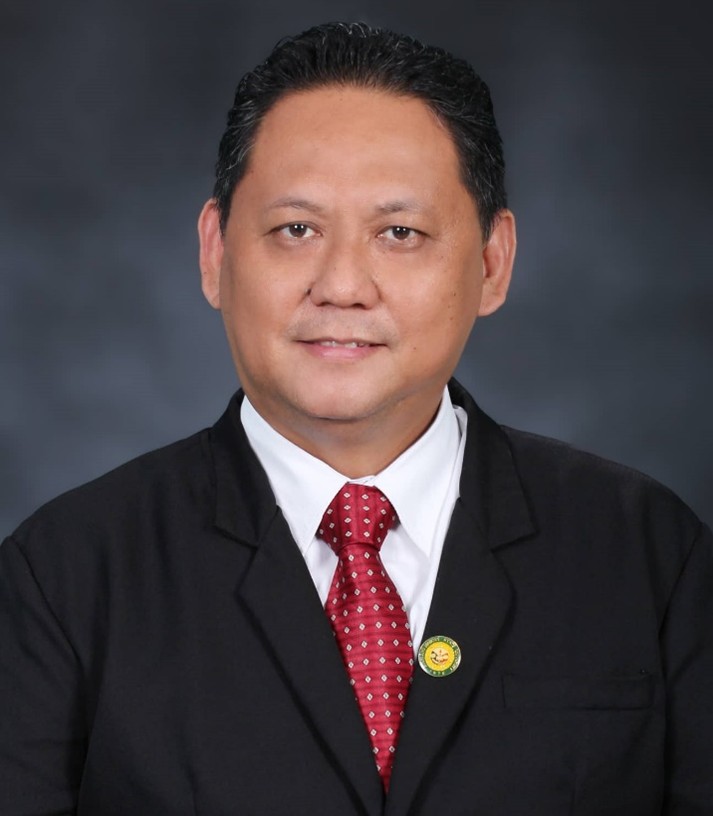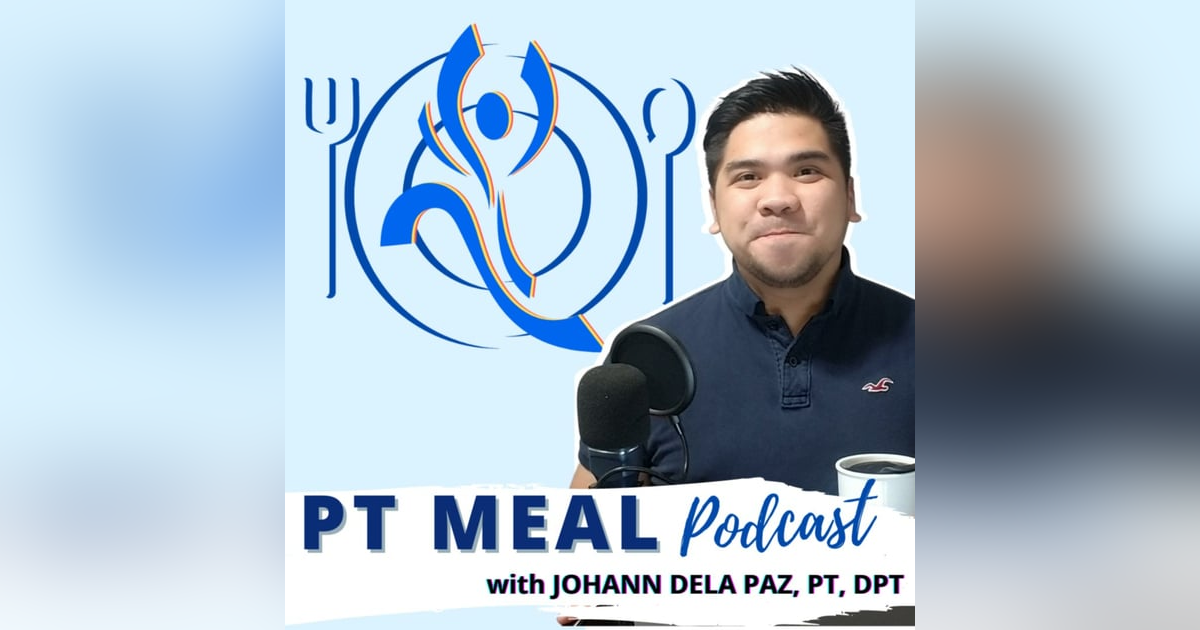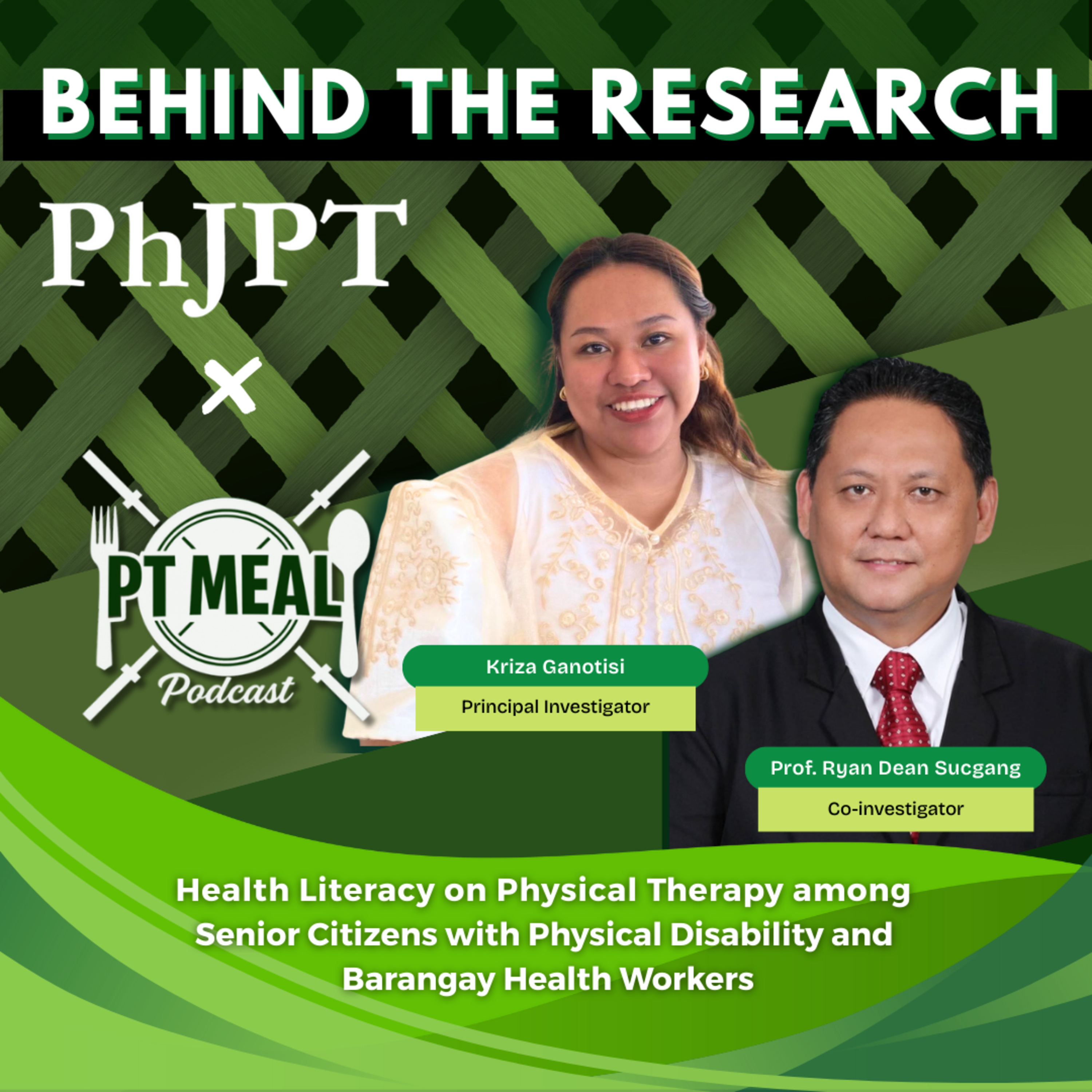BTR 7: Health Literacy on Physical Therapy Among Senior Citizens and Community Health Workers
In this episode of Behind the Research, host Johan dela Paz welcomes Ms. Kriza Ganotisi and Prof. Ryan Dean Sucgang, faculty members from Mariano Marcos State University, to discuss their research titled "Health Literacy on Physical Therapy Among Senior Citizens with Physical Disability and Barangay Health Workers."
The conversation delves into the significance of health literacy in physical therapy, particularly for senior citizens with physical disabilities, and the role of barangay (community) health workers in promoting this knowledge. The episode aims to bridge the gap between evidence and clinical practice, exploring how the findings from their research can impact the physical therapy profession in the Philippines.
Tune in to gain insights into the study's methodology, data, and real-world implications for enhancing health literacy in the community.
Download the full research here: Health Literacy on Physical Therapy among Senior Citizens with Physical Disability and Barangay Health Workers. https://soar.usa.edu/phjpt/vol3/iss3/2/
Health Literacy in Physical Therapy: Importance for Senior Citizens and Community Health Workers
Health literacy regarding physical therapy is a critical component in enhancing the understanding and accessibility of rehabilitation services, particularly for senior citizens and community health workers (CHWs). The podcast episode featuring Ms. Kriza Ganotisi and Prof. Ryan Dean Sucgang highlights several key points that underscore the significance of health literacy in this context.
Understanding the Target Groups
-
Senior Citizens: Many senior citizens live with chronic musculoskeletal conditions that physical therapy can manage or alleviate. However, they often lack appropriate referrals or interventions due to a limited understanding of what physical therapy entails. The study discussed in the episode focused on assessing health literacy among senior citizens with physical disabilities, revealing a gap in their comprehension of physical therapy-related information.
-
Community Health Workers (CHWs): CHWs, or barangay health workers, serve as frontline health representatives in communities. They play a vital role in disseminating health information and guiding patients. However, the study found that many CHWs had limited formal knowledge of physical therapy, which restricted their ability to effectively communicate the benefits and services available to the elderly population.
Bridging the Gap
The lack of health literacy among both senior citizens and CHWs creates a significant barrier to accessing rehabilitation services. The podcast emphasized that improving health literacy can help bridge this gap in several ways:
-
Empowerment through Education: By educating CHWs about physical therapy, they can better inform and guide senior citizens in their communities. This empowerment is crucial for enhancing the overall health literacy of the community, as CHWs are often the first point of contact for health-related inquiries.
-
Addressing Misconceptions: The episode highlighted common misconceptions about physical therapy, such as the belief that physical therapists are merely massage therapists or that their services are only relevant for those with severe disabilities. By improving health literacy, these misconceptions can be addressed, leading to a more accurate understanding of the role and benefits of physical therapy.
-
Community Engagement: The researchers noted the importance of involving community leaders and local government units (LGUs) in health literacy initiatives. By collaborating with these entities, physical therapists can create informational materials and workshops that raise awareness about physical therapy services, making them more accessible to the community.
Practical Strategies for Improvement
The podcast discussed several strategies to enhance health literacy regarding physical therapy:
-
Use of Local Language: Conducting interviews and assessments in the local language (Ilocano) helped ensure that senior citizens could understand the information being presented. This approach can be expanded to include educational materials that are culturally and linguistically appropriate.
-
Development of Informational Materials: Creating easy-to-understand brochures, videos, and other multimedia resources can help disseminate information about physical therapy services. These materials should be tailored to the specific needs and understanding of the community.
-
Workshops and Seminars: Engaging CHWs in workshops that teach basic exercises and the use of assistive devices can empower them to share this knowledge with senior citizens. This hands-on approach not only improves health literacy but also fosters a sense of community involvement.
Conclusion
In conclusion, health literacy regarding physical therapy is essential for both senior citizens and community health workers. By addressing the gaps in understanding and access to rehabilitation services, we can improve health outcomes for vulnerable populations. The insights shared in the podcast underscore the need for ongoing education, community engagement, and the development of culturally relevant resources to enhance health literacy in physical therapy. Through these efforts, we can ensure that senior citizens receive the care they need and that CHWs are equipped to support their communities effectively.
Timestamps
00:00:00 - Introduction to Behind the Research
00:01:27 - Summary of the Research Study
00:02:58 - Inspiration Behind the Study
00:05:01 - Role of Barangay Health Workers
00:09:06 - Challenges in Data Collection
00:10:26 - Misconceptions About Physical Therapy
00:13:27 - Strategies to Correct Misconceptions
00:17:06 - Government Support for CBR Program
00:21:10 - Sustainability of Community Programs
00:22:08 - Gender Disparity Among Health Workers
00:25:11 - Importance of Health Literacy Terms
00:30:57 - Volunteer vs. Paid Roles of Health Workers
00:33:57 - Role of Physical Therapists in the Community
00:41:00 - Future Studies on Health Literacy
00:48:15 - Conclusion and Final Thoughts

RYAN DEAN T. SUCGANG is a practicing physical therapist in academia and research since 2000 at the Mariano Marcos State University (MMSU), City of Batac, Ilocos Norte, where he is currently holding the position of Associate Professor III. He was a former PT Department Chairperson (2012-2015), College Secretary of the College of Medicine (2013-2017), and OIC-Dean of the College of Health Sciences (2020-2023). He is currently designated as the university director of the Human Movement and Artistic Innovation Center– the sports and performing arts arm of MMSU.
He finished his Bachelor of Science in Physical Therapy at the MMSU in 1999. He earned his Master of Science in Human Movement Science at the University of the Philippines – College of Human Kinetics in Diliman, Quezon City where he was awarded the GAWAD KINETIKA for outstanding graduate student and outstanding graduate thesis, respectively, in 2008.
He has been a research adviser of PT undergraduate research since 2003 and has been the lead organizer of the PT Research Colloquium on hybrid mode since 2021. He is the MMSU project leader on indigenous health practices of the Philippine-Canadian collaboration on indigenous knowledge systems and cultural management. This earned him the privilege to be part of the country’s delegation to Canada for a study visit under CHED in 2022. He is also a research team member on the health conditions of tobacco farmers (funded by DOST-PCHRD, 2023) as well as the mental health strategies employed by students, faculty members, and non-teaching staff (funded by MMSU-GA… Read More














